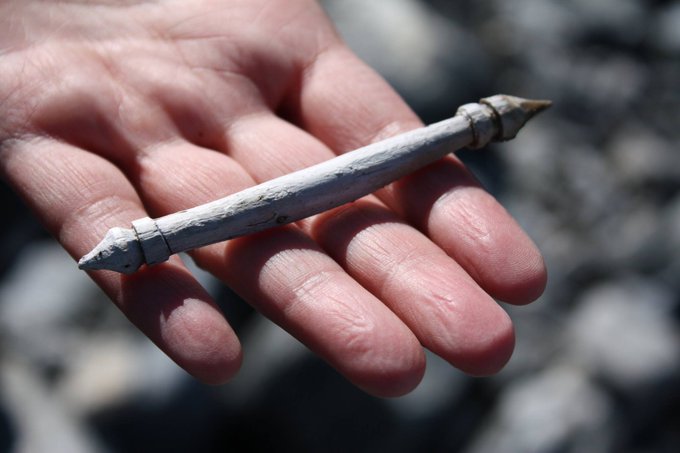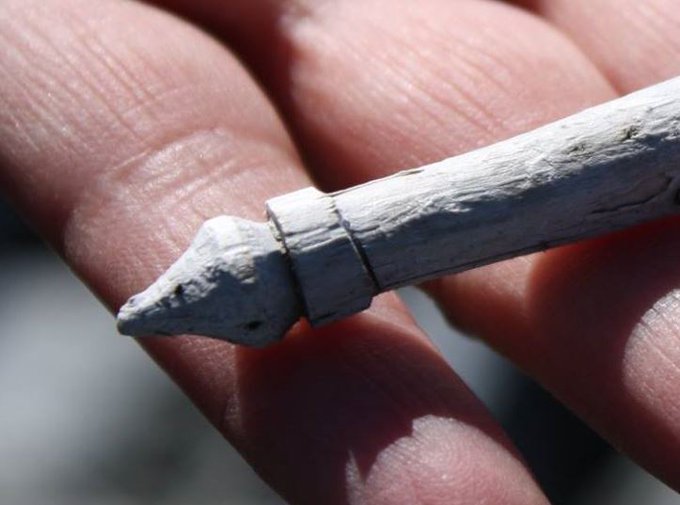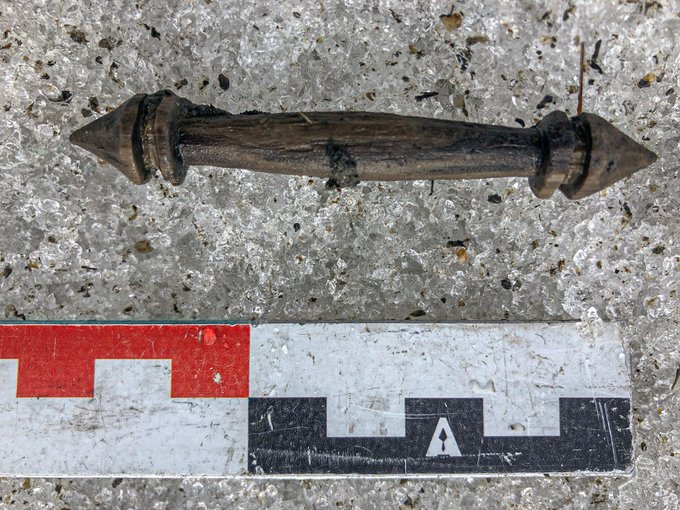Prior to radiocarbon dating, the wood species on our piece was also determined to be juniper - the only example of the use of juniper in our more than 200 radiocarbon dated samples! Now we only needed to know how old it was. The sample travelled to Beta Analytic in Florida.
2
18
958
Replies
This strange artifact melted out of the ice in the Lendbreen pass. We scratched our heads to try to figure out what it had been used for but we couldn't come up with a good answer. The object was exhibited at the local museum. A visiting elderly woman solved the mystery for us.
61
949
7K
She had used such objects on a local farm in the 1930s!😮 She told us that it is a bit for young animals, mainly goat kids and lambs, to stop them from getting milk from their mothers.
9
26
1K
The carved furrows on each end originally had string attached, which was used for fastening behind the ears, so the bit wouldn't come loose. Usually, such bits were made in juniper, she said, as this is a very tough wood.
3
18
1K
We were stunned when the result came back: The bit belonged to the 11th century AD - it was 1000 years old😮 Now how is that for long-lived material culture and strong local traditions?
7
55
2K




